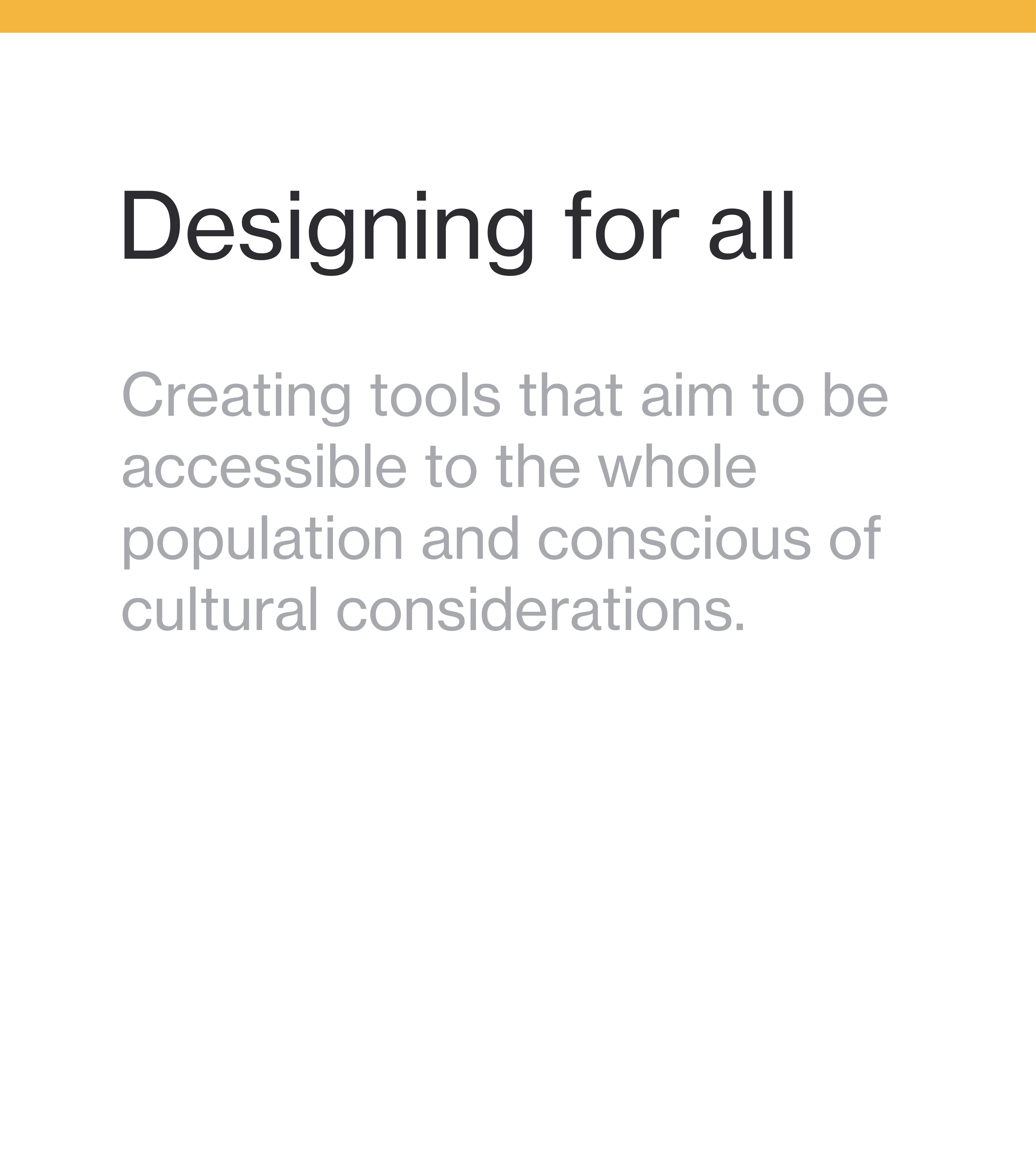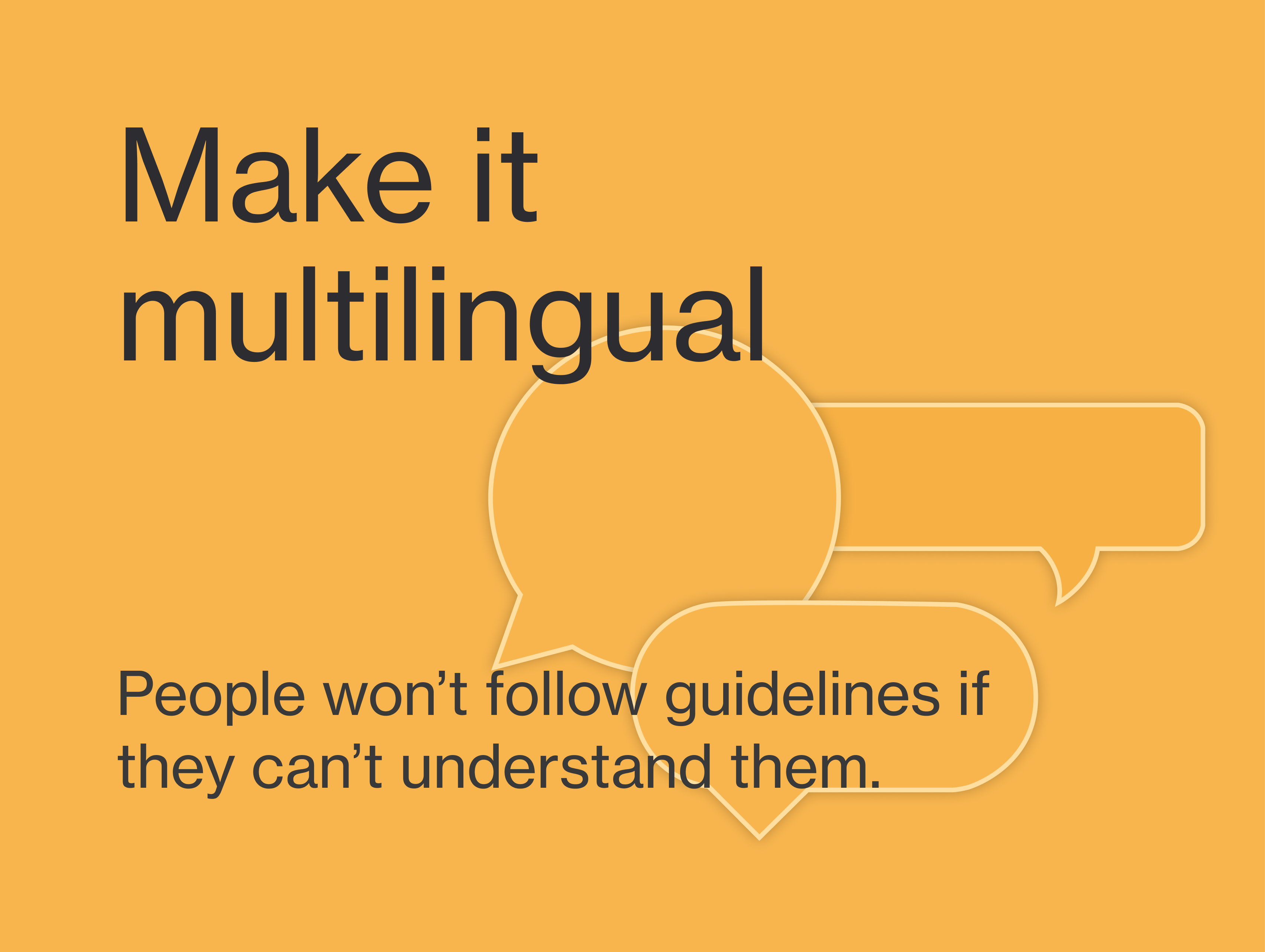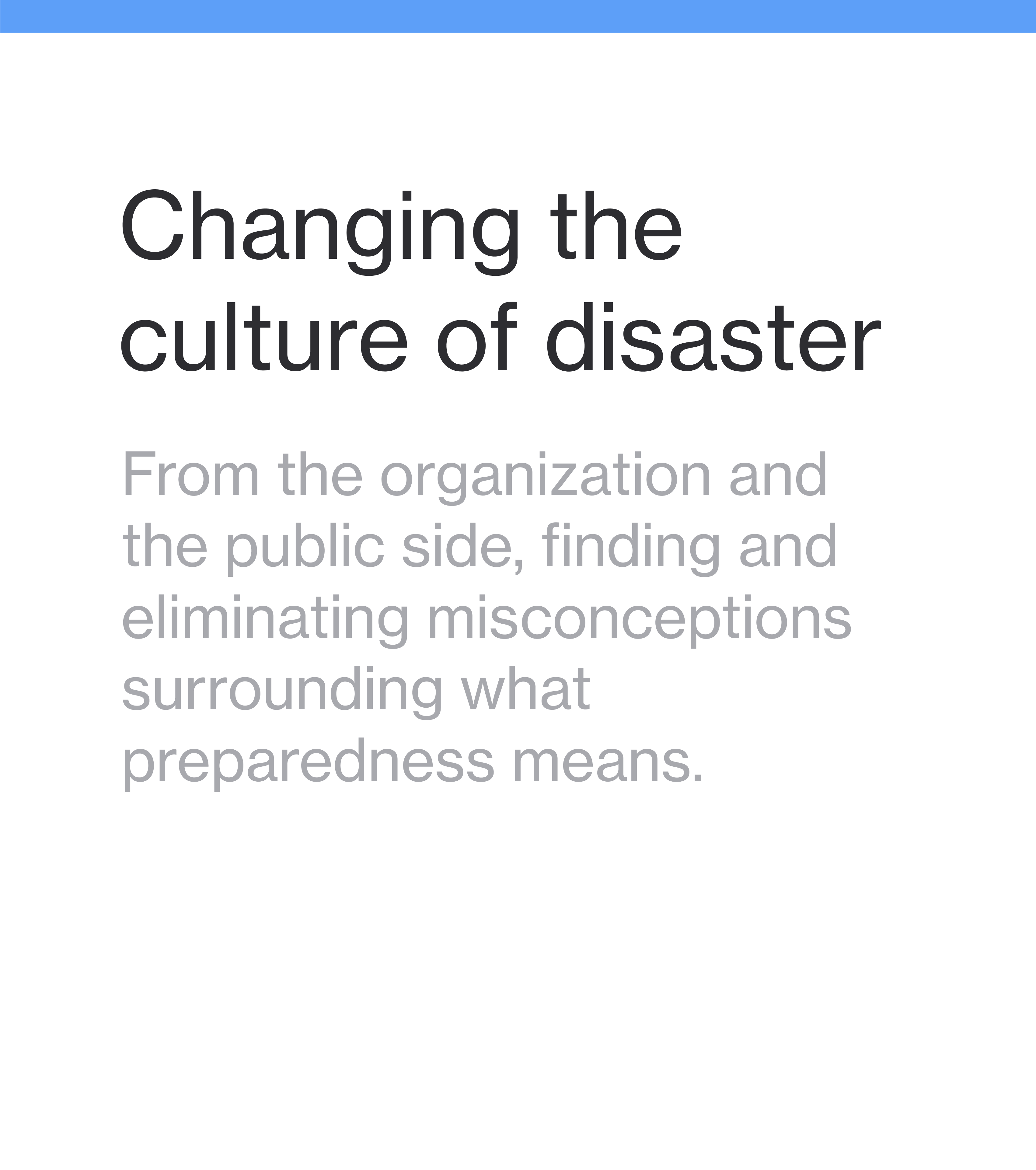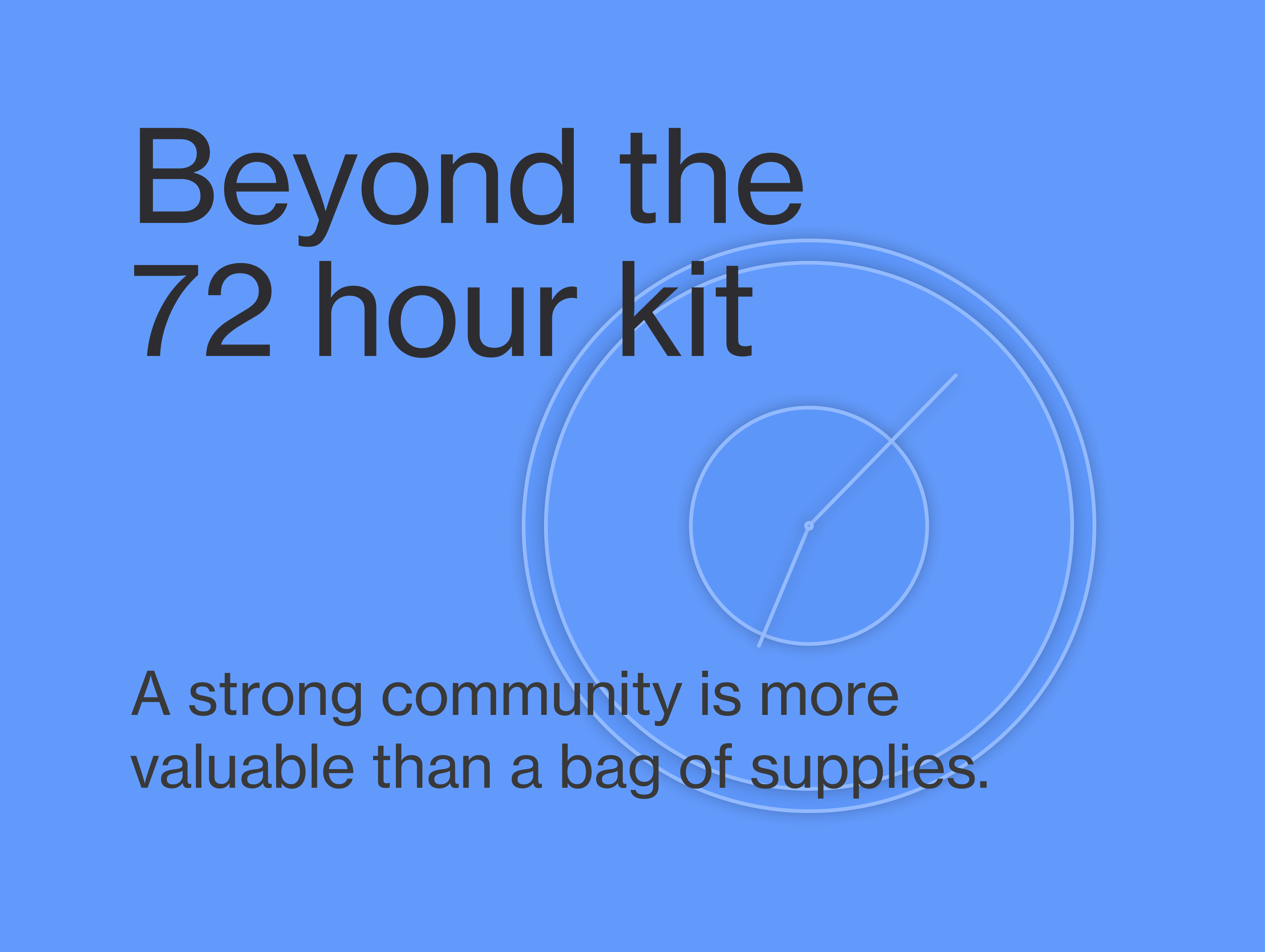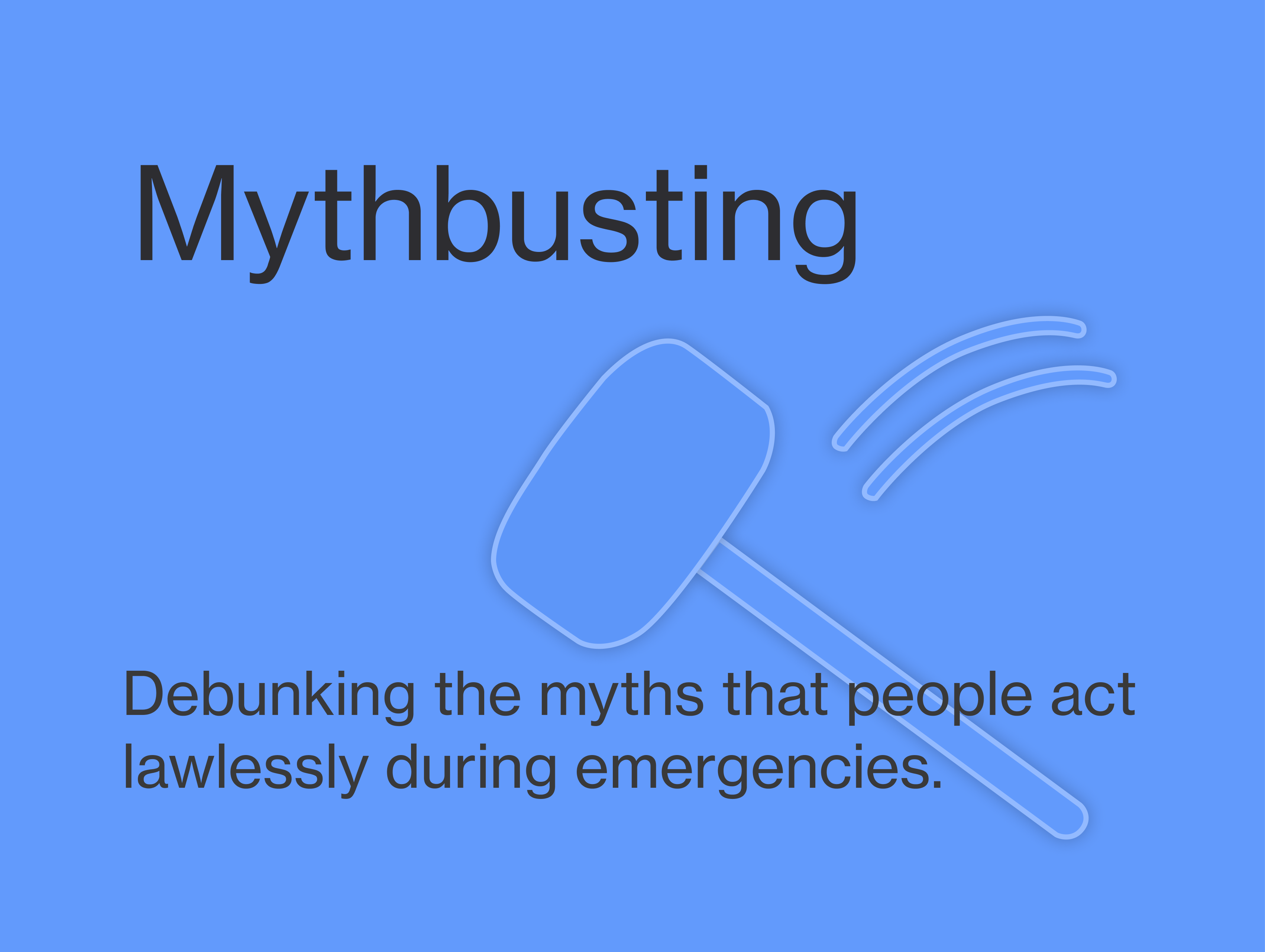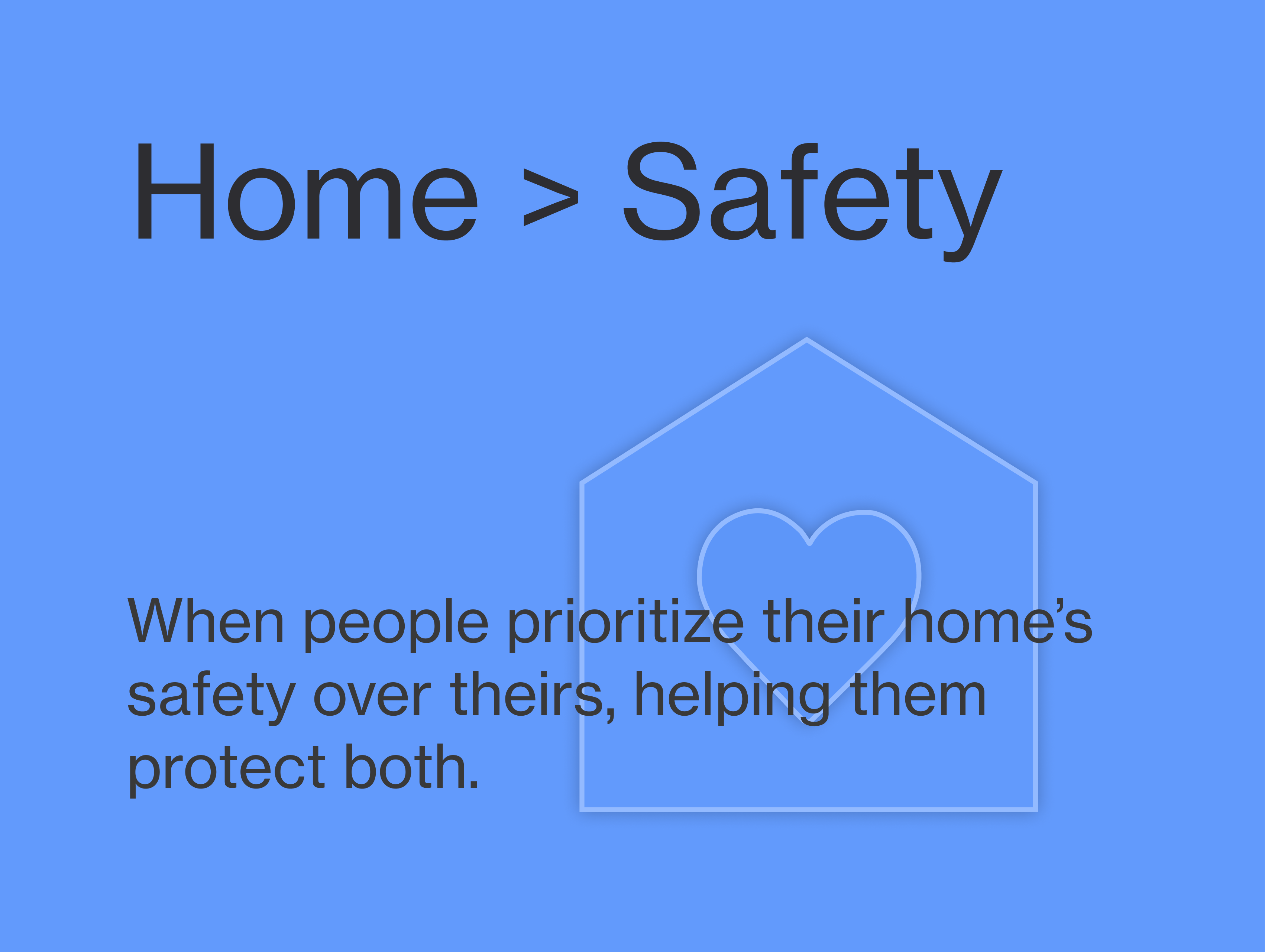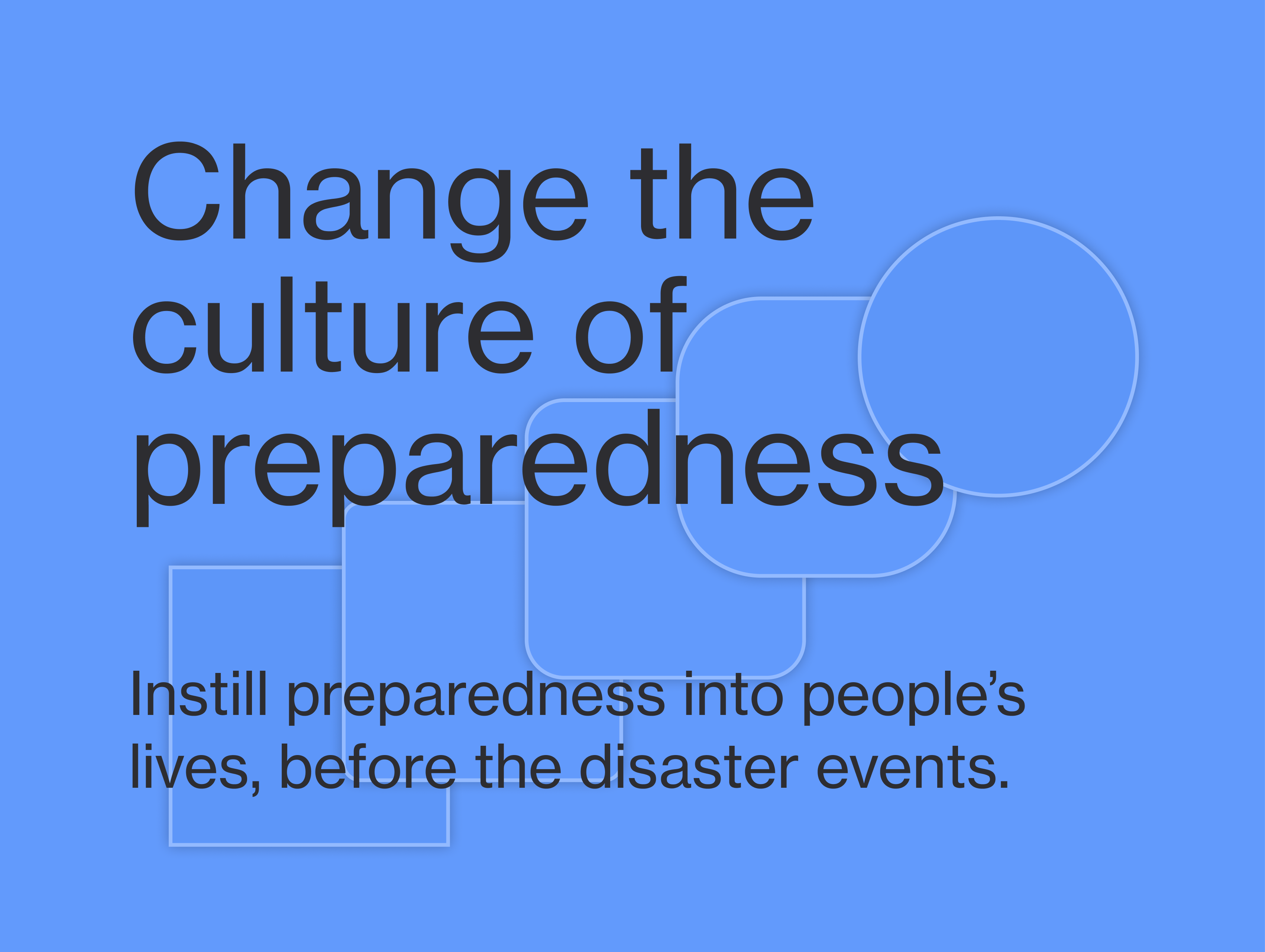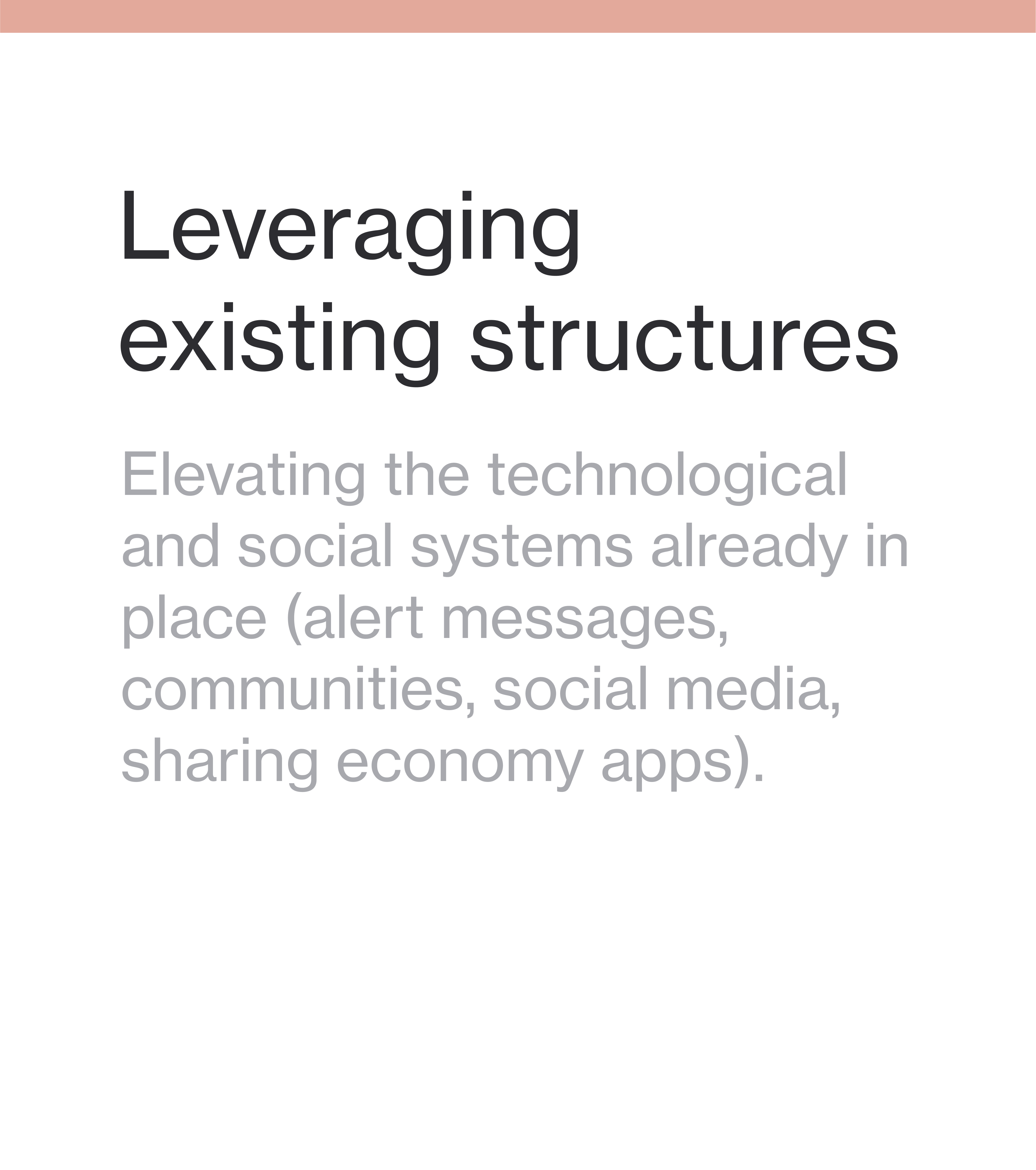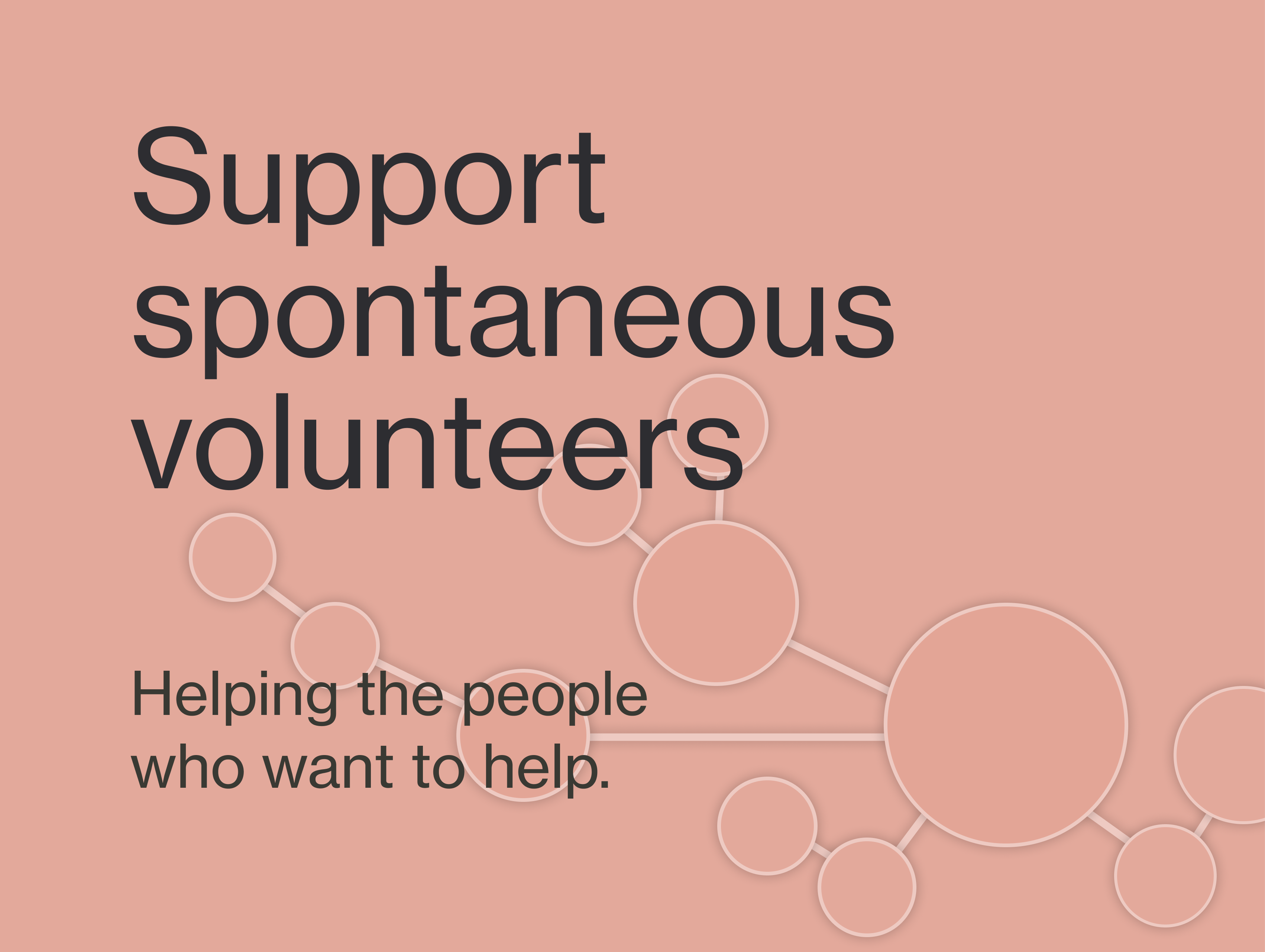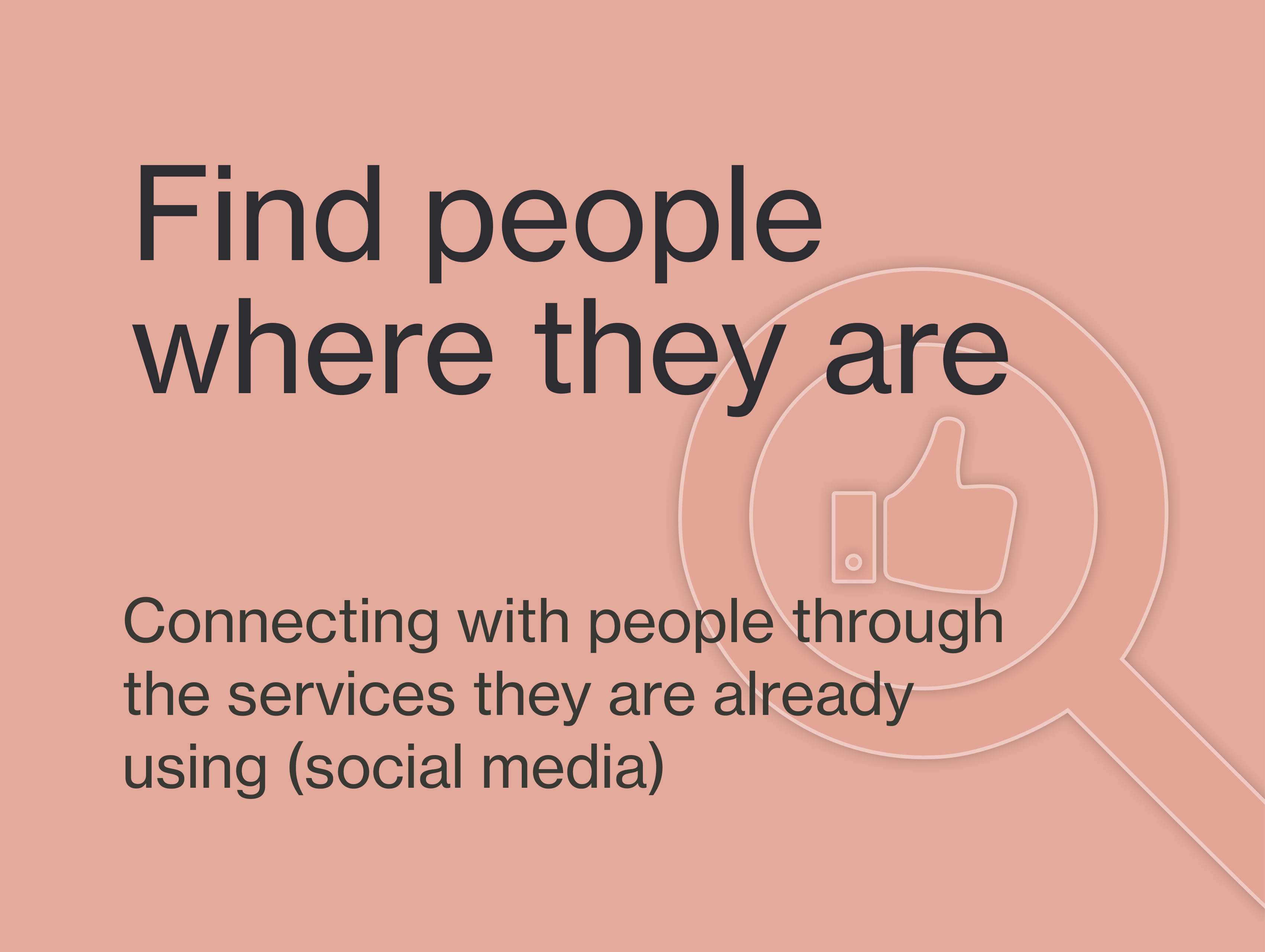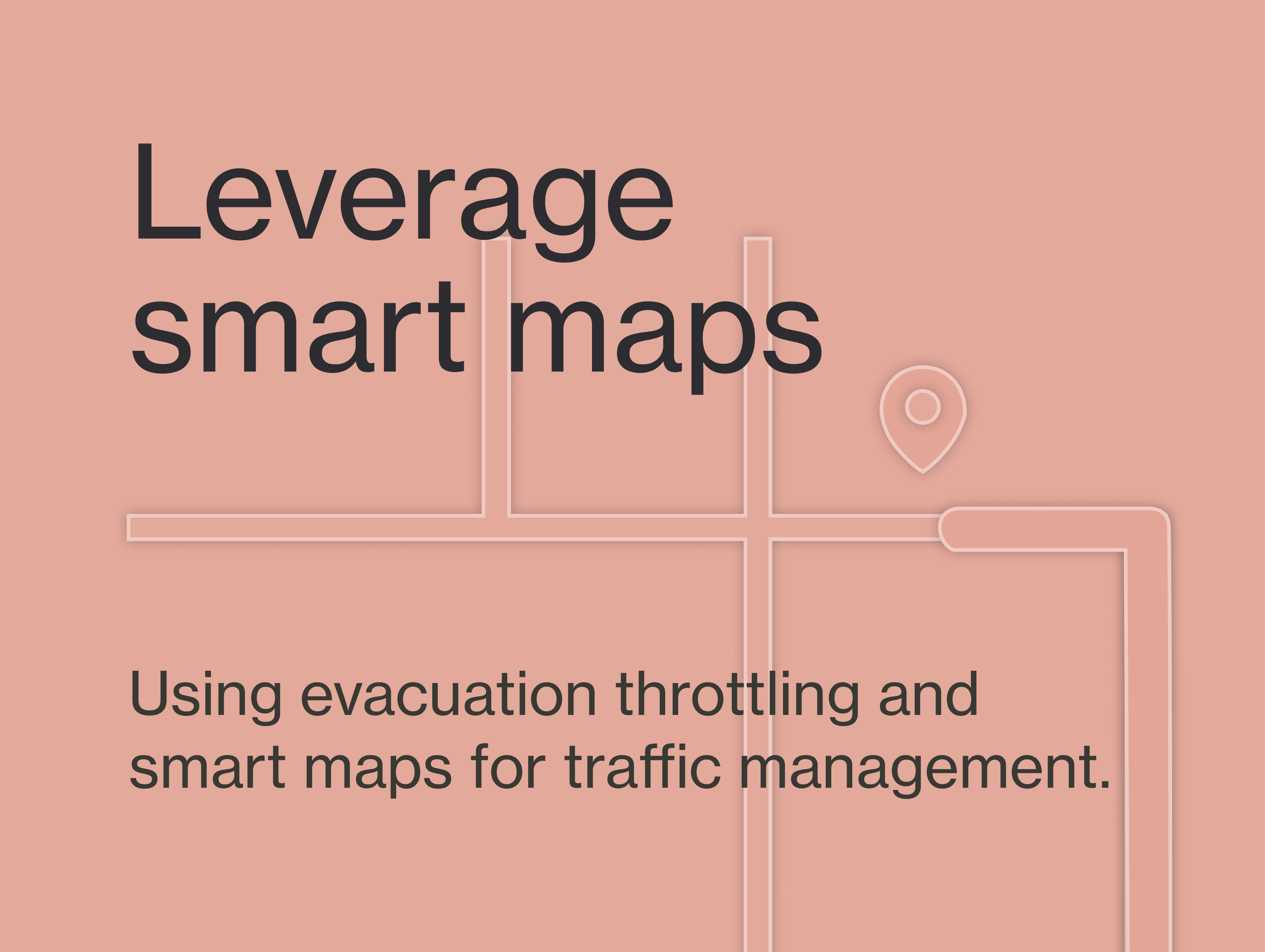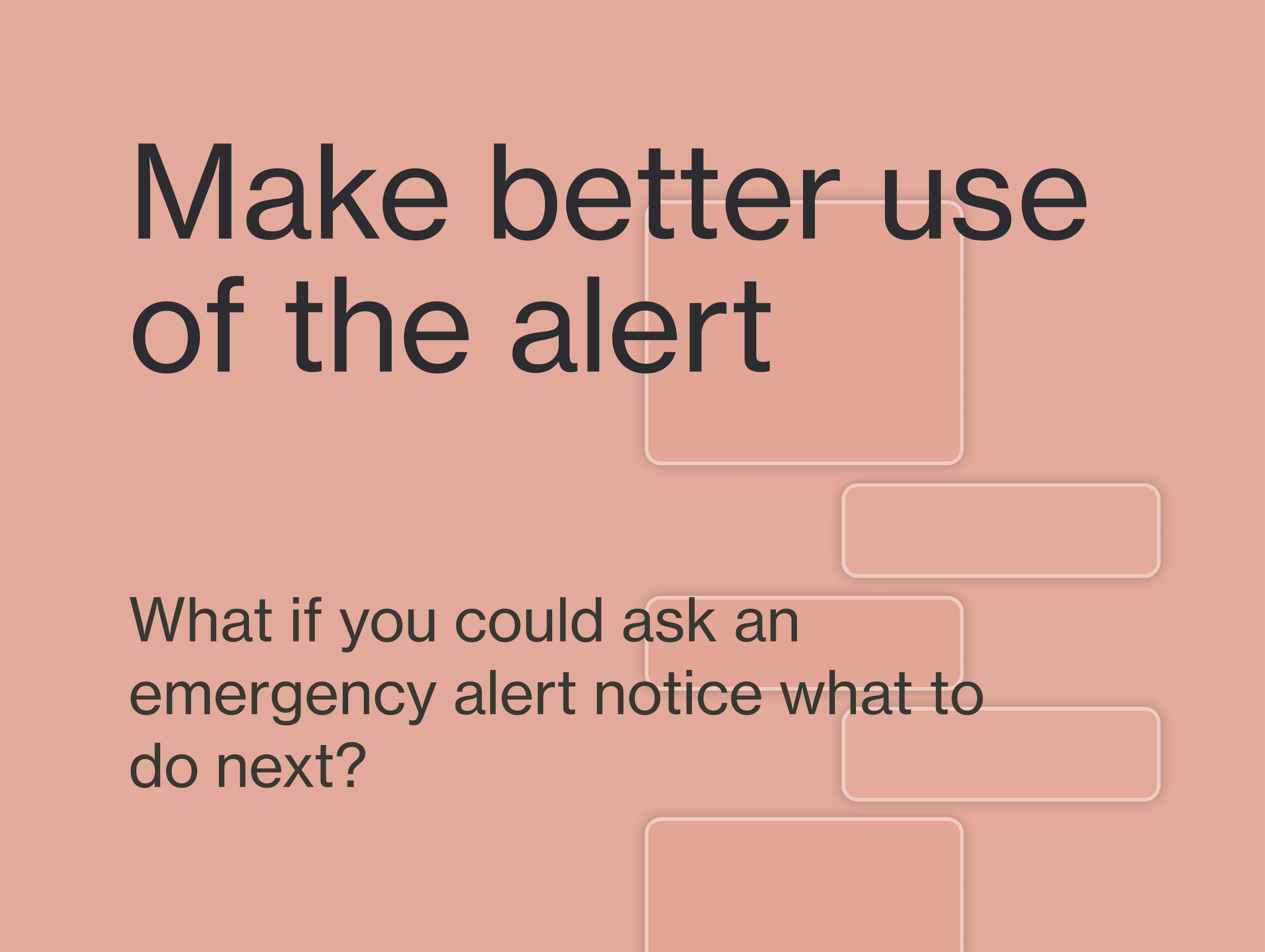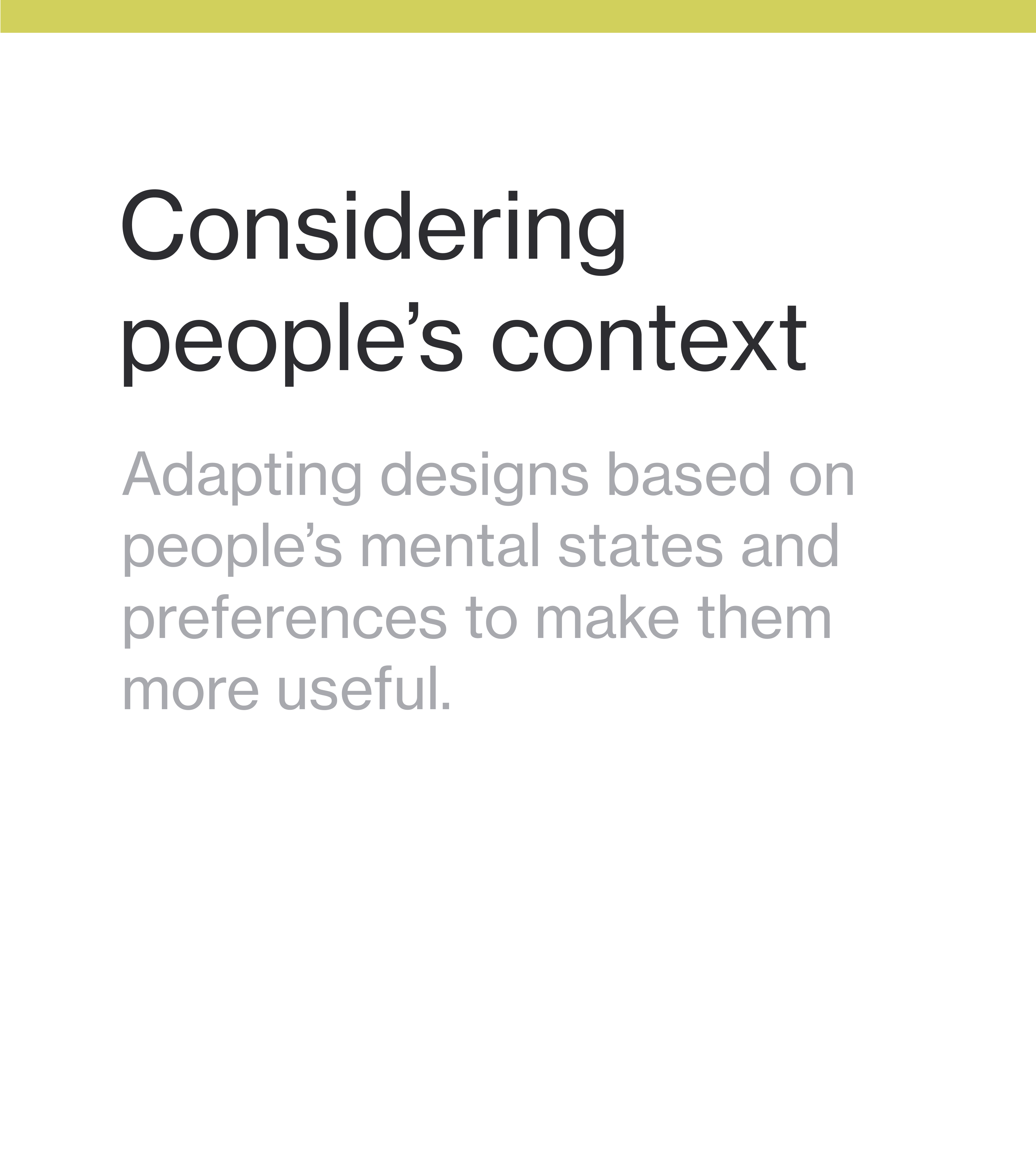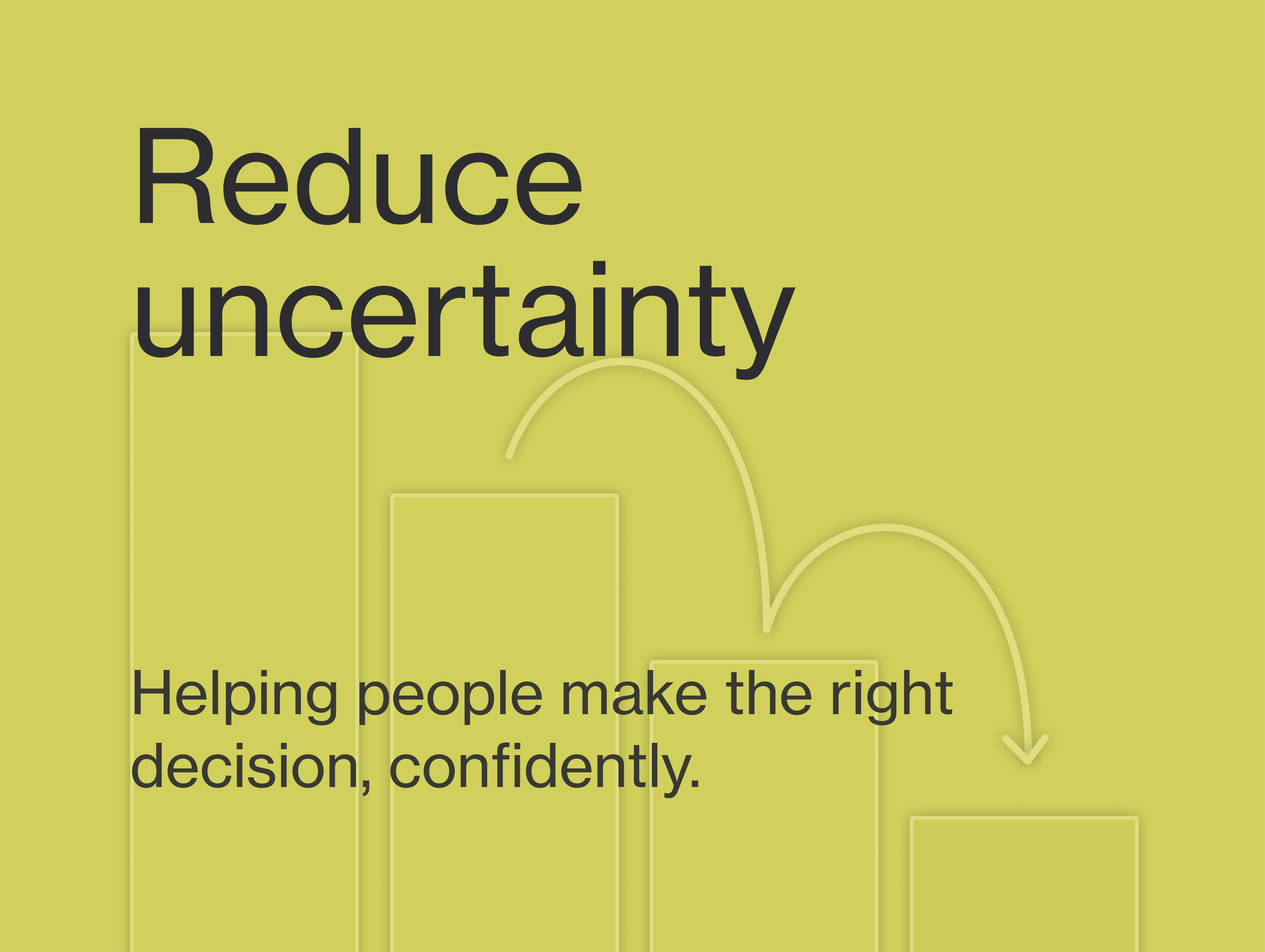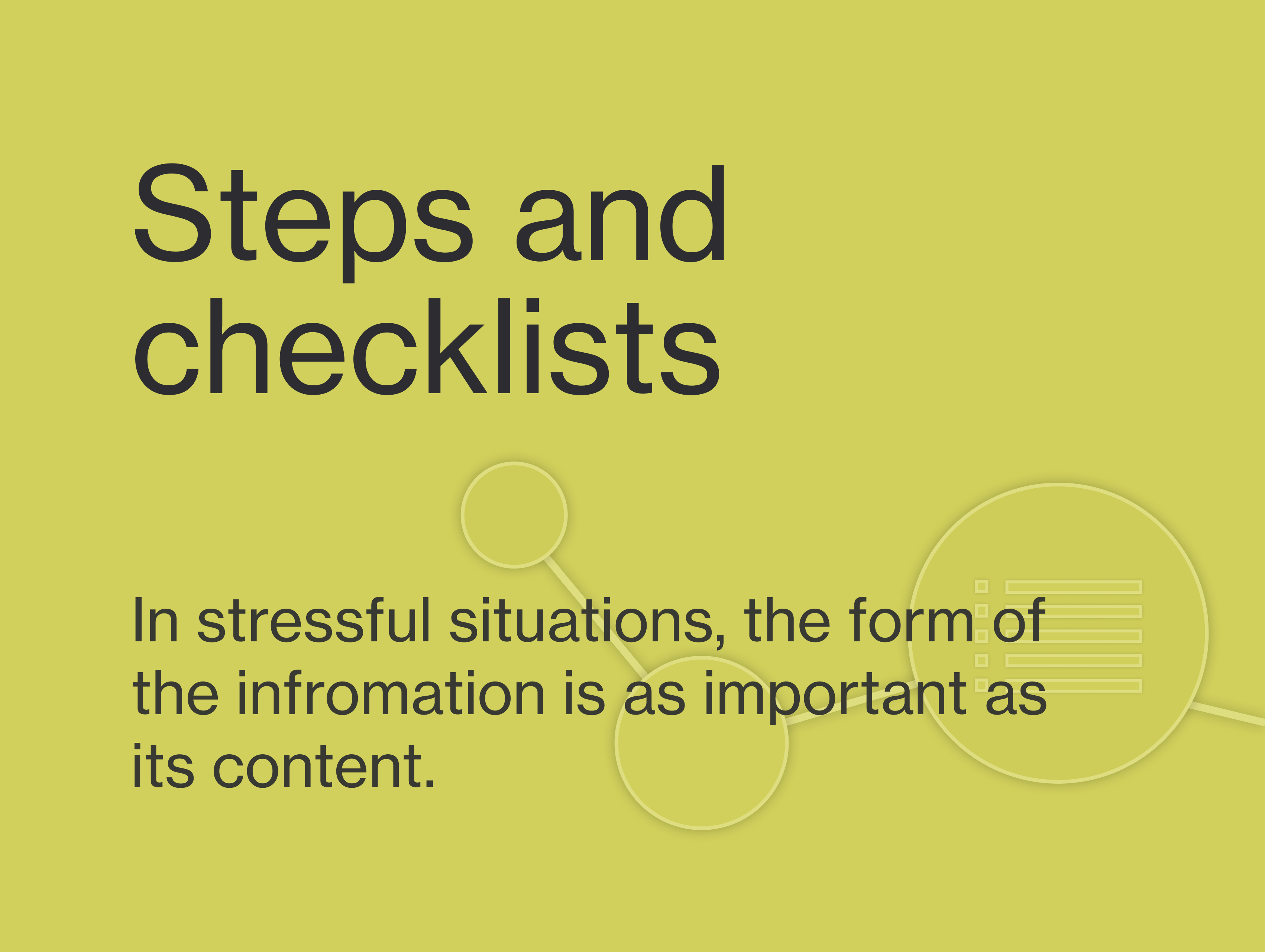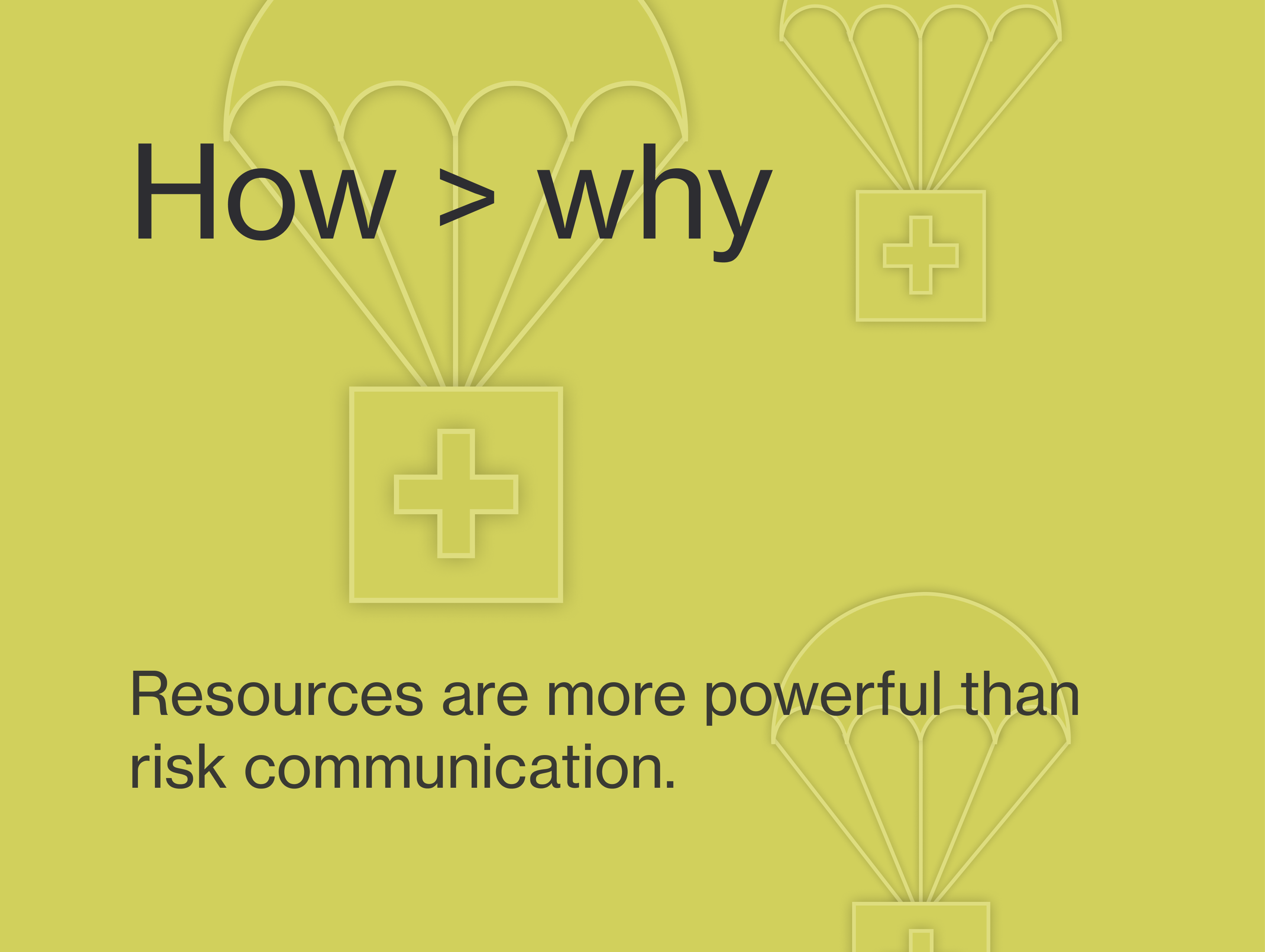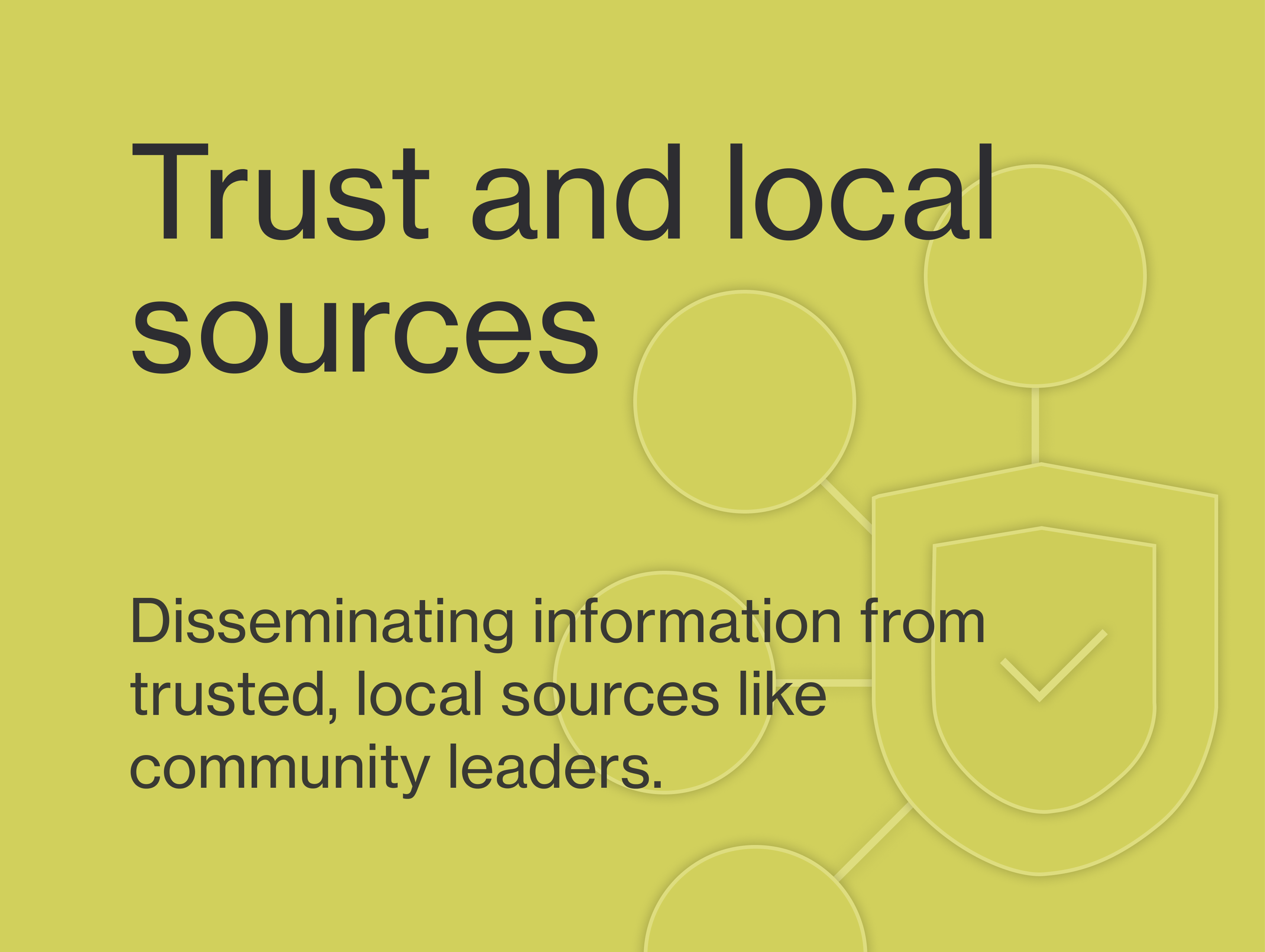Changing the culture of disaster
Beyond the 72 hour kit
Yes, it is critical to have water, food, and medications available to you in the event of a disaster. However, there is limited research to justify the extraordinary emphasis that disaster management leaders have placed on the 72 hour emergency kit.
It has become apparent that connection to local community is significantly more important than these kits, as supportive networks are much more adaptive to crisis than a bag of supplies.
Examples
______
Encourage community
plans
We created contextual pro-tips that promote links between nearby groups. These informal contacts are often crucial to surviving disasters.
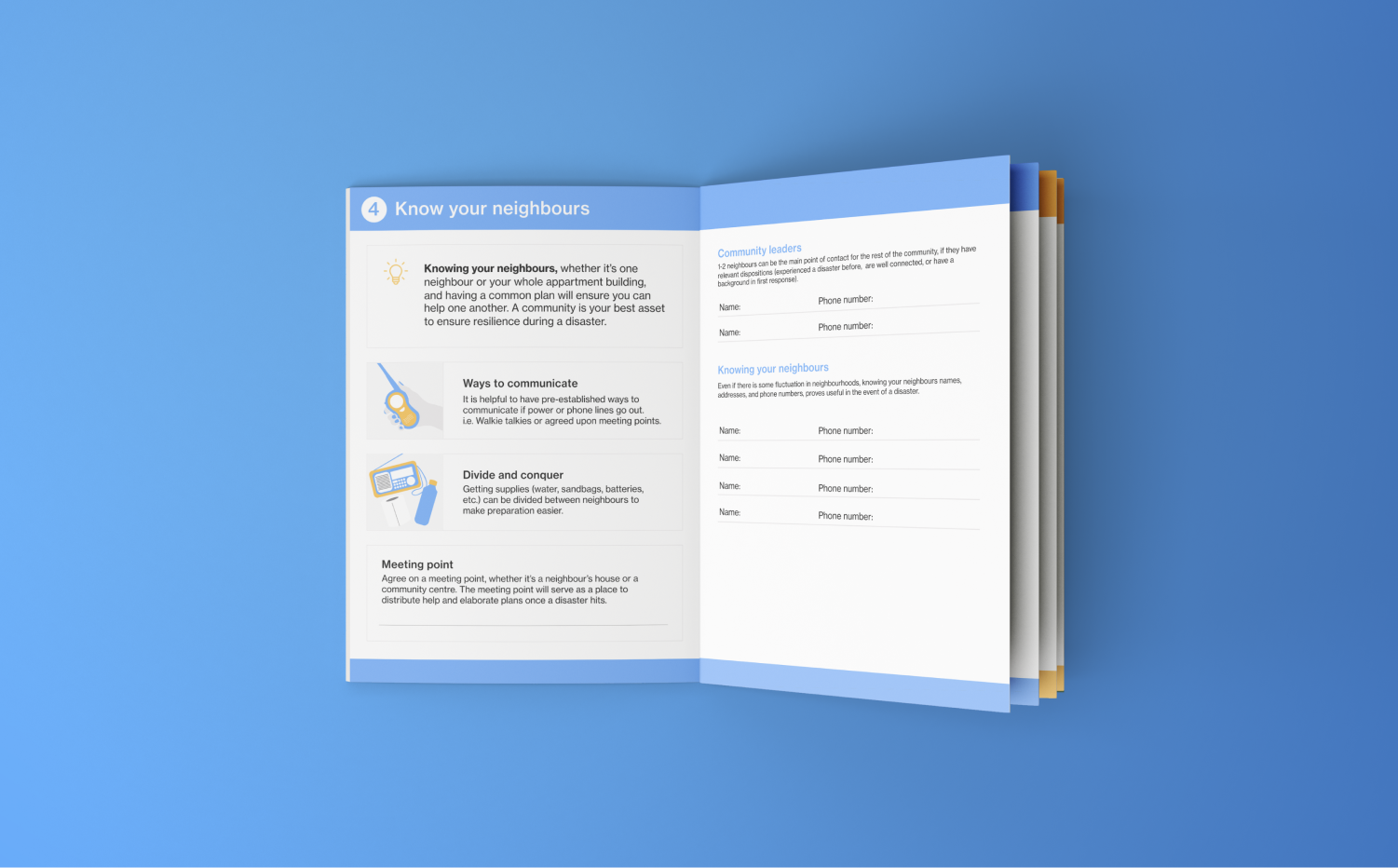
Know your neighbours
When designing emergency preparation materials, encourage people to make plans that will strengthen neighbourhood resiliency.
We did this by suggesting people establish community meeting points, neighbourhood leaders, and pool efforts when gathering emergency supplies.

Connect people
We utilized communication tools like the alert bot to coordinate the pooling of resources. This gives people access to the things they need to evacuate, immediately.
Supporting research
______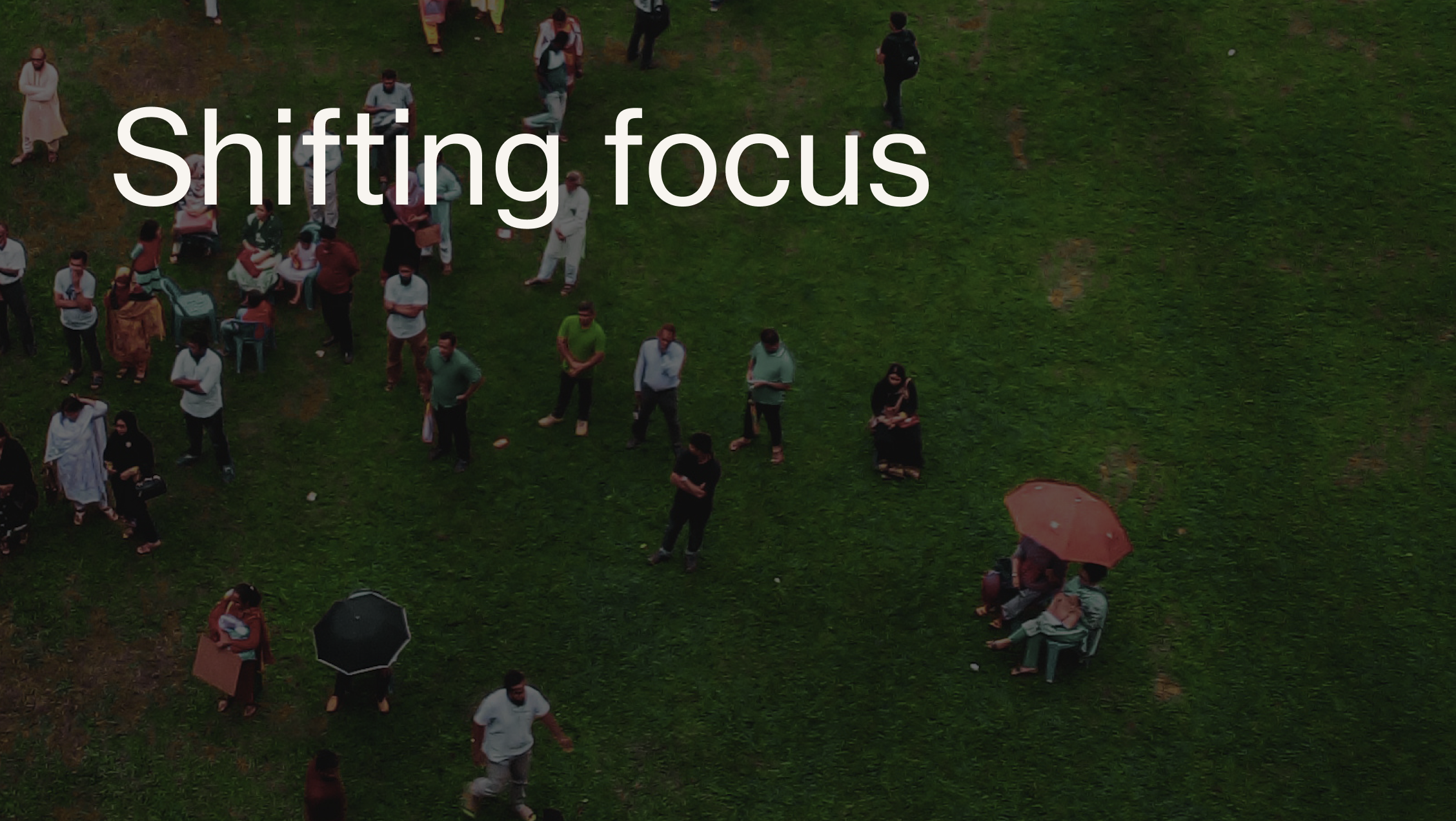
“There tends to be a focus on written disaster plans. But good planning instead focuses on such processes as establishing informal links between key groups.”
Henry Quarentelli, Pioneer of Sociology of Disaster.“A half century of social science disaster research”
2003
Henry Quarentelli, Pioneer of Sociology of Disaster.“A half century of social science disaster research”
2003

“Communities that are more cohesive feel more prepared for a disaster.”
Proffesor Daniel Aldrich
Director of Security and Resilience Study Program, Northwestern University

“Engaging citizens and communities [needs to] happen continually, not just when a weather event is occurring.”
BC Flood and Wildfire Review
2018
BC Flood and Wildfire Review
2018
